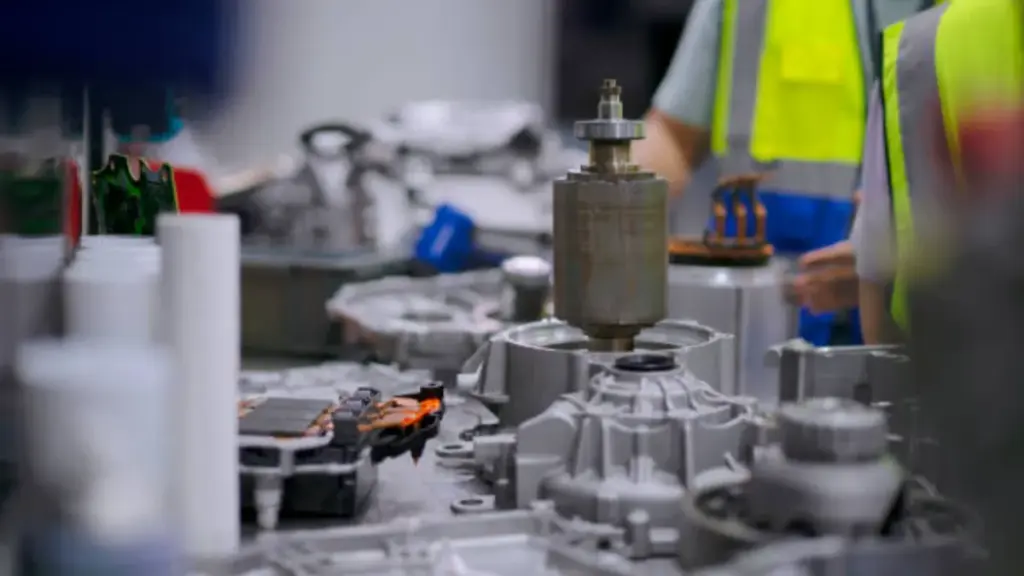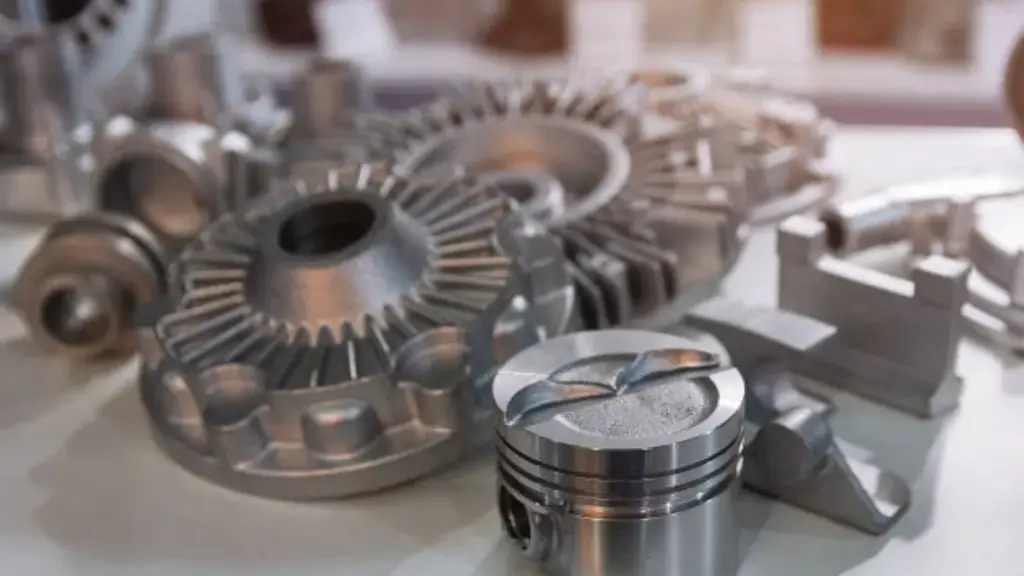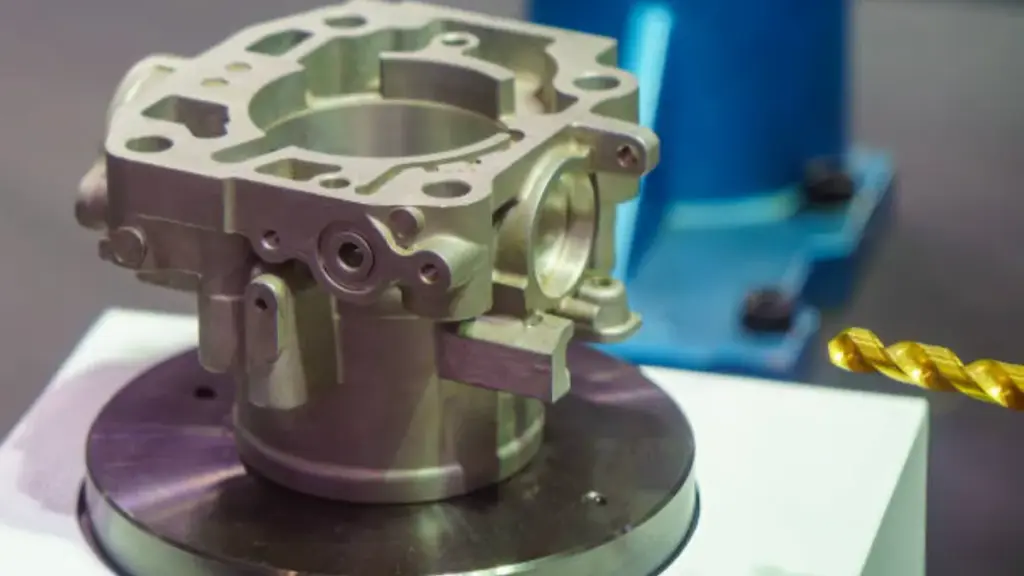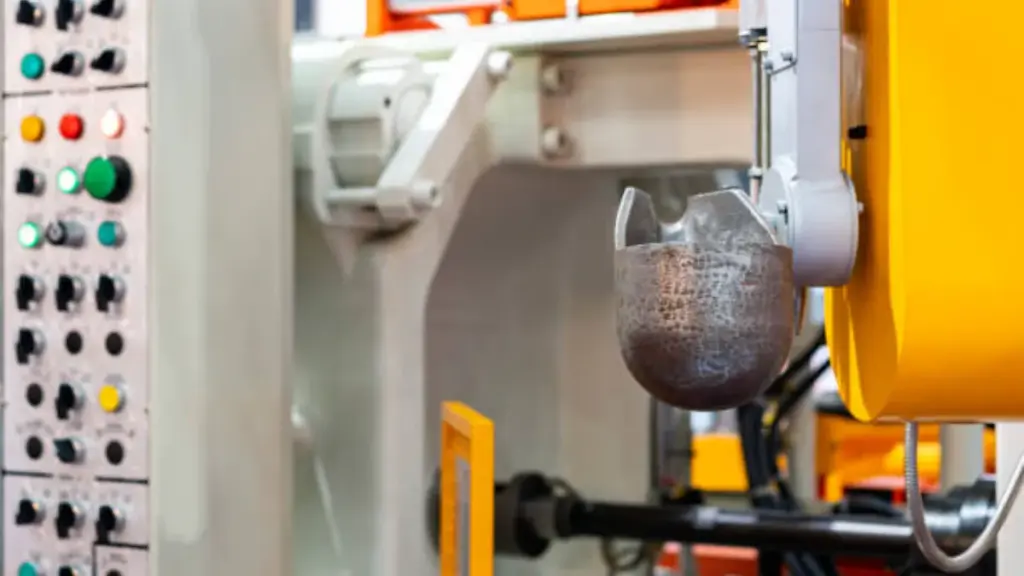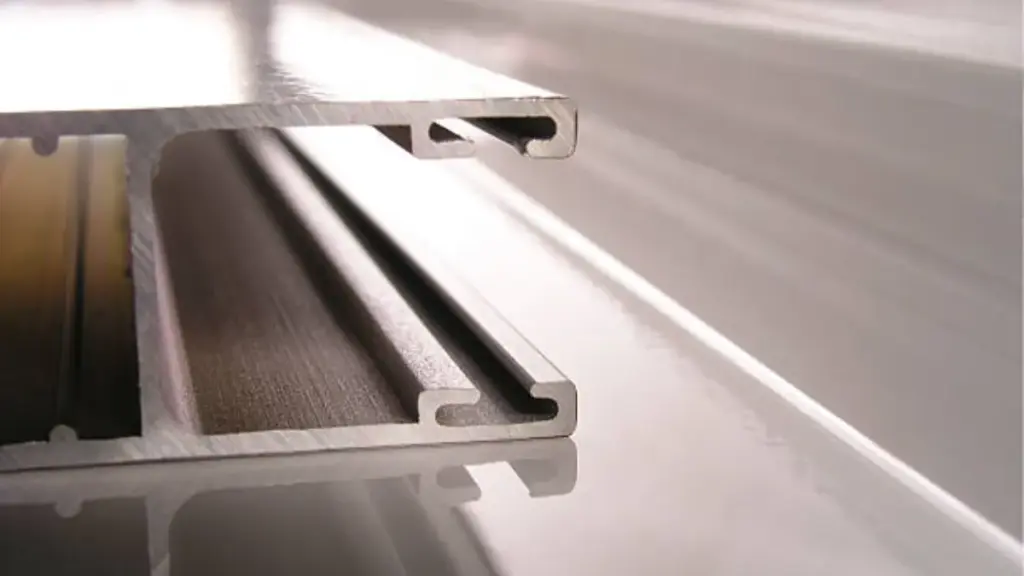A fundição de matriz é um processo de fabricação popular que envolve injeção de metal fundido em uma cavidade de molde sob alta pressão. Isso resulta em peças metálicas precisas e complexas que podem ser usadas em várias indústrias, incluindo automotivo, aeroespacial, e eletrônica. Dois métodos comuns de fundição são a câmara quente e a câmara fria fundindo. Neste artigo, Compararemos os dois métodos e exploraremos seus prós e contras para ajudá -lo a determinar a melhor opção para suas necessidades de fabricação.
Câmara Quente vs.. Fundição sob pressão em câmara fria
A escolha entre o elenco de morrer de câmara quente vs. O fundição de matriz de câmara fria pode causar um impacto significativo no seu processo de fabricação. Neste capítulo, Vamos nos aprofundar em suas diferenças no processo, custo, eficiência, Compatibilidade da liga, controle de qualidade, e impacto ambiental.
| Aspecto | Fundição sob pressão de câmara quente | Fundição sob pressão em câmara fria |
| Processo | Metal fundido na máquina, injeção direta no molde | Metal derretiu externamente, Em seguida, injetado em mofo |
| Custo | Requer menor investimento inicial | Custos iniciais mais altos de equipamento |
| Eficiência | Tempos de ciclo mais rápidos | Tempos de ciclo mais lentos |
| Compatibilidade da liga | Ligas de ponto de fusão baixa (por exemplo, zinco, magnésio) | Altas altas de fusão (por exemplo, alumínio, cobre) |
| Controle de qualidade | Limitado a peças mais simples, pode ter diminuído o controle sobre geometrias complexas | Melhor controle para peças complexas e detalhadas |
| Impacto ambiental | Processo com eficiência energética | Pode exigir mais energia para o processo de fusão externa |
Diferenças de processo de fundição
Em fundição sob pressão em câmara quente, O metal fundido está contido em um forno dentro da própria máquina de fundição, permitindo injeção rápida e direta na cavidade do molde.
Enquanto estiver na câmara fria, morrer, O metal é derretido em um forno separado externo à máquina de fundição e depois transferido para a câmara de injeção para fundição.
Comparação de custos
Quando se trata de custo, O elenco de morrer de câmara quente geralmente requer menor investimento inicial em comparação com a fundição de matriz de câmara fria. Isso ocorre porque as máquinas de fundição de moradia de câmara quente são tipicamente menores e menos complexas, tornando -os mais acessíveis para os fabricantes. No entanto, Os custos operacionais para o elenco de morrer de câmara quentes podem ser maiores devido ao aquecimento contínuo do metal na câmara.
Eficiência de produção
Em termos de eficiência de produção, Casto de matriz de câmara quente oferece tempos de ciclo mais rápidos em comparação com o moldagem de matriz de câmara fria. Isso ocorre porque o metal fundido já está na câmara, permitindo injeção mais rápida na cavidade do molde. Adicionalmente, Dado de câmara quente elenco consome menos energia, tornando-a uma opção mais eficiente para produção de alto volume.
Compatibilidade da liga
O elenco de matriz de câmara quente é limitado a baixas ligas de ponto de fusão, como zinco e magnésio, Devido à exposição contínua do metal ao elemento de aquecimento da câmara. Por outro lado, Casto de matriz de câmara fria pode acomodar altas ligas de ponto de fusão, como alumínio e cobre, tornando -o uma opção versátil para fundição de alumínio e uma ampla gama de aplicações.
Controle de qualidade
Quando se trata de controle de qualidade, O elenco de matriz de câmara quente pode oferecer melhor acabamento superficial devido ao rápido resfriamento do metal na cavidade do molde. No entanto, O elenco de morrer de câmara quente é mais propenso à porosidade, que pode afetar a integridade estrutural do produto final. Fundição sob pressão em câmara fria, por outro lado, fornece melhor controle sobre o processo de elenco, resultando em menos defeitos e peças de alta qualidade.
Impacto ambiental
Em termos de impacto ambiental, O elenco de matriz de câmara fria é considerada mais ecológica em comparação com o elenco de morrer de câmara quente. Isso ocorre porque a transmissão de câmara fria elenco consome menos energia e produz menos desperdício durante o processo de fabricação. Adicionalmente, O fundição de matriz de câmara fria pode ser facilmente integrado aos programas de reciclagem, tornando -o uma opção sustentável para os fabricantes.
O que é fundição sob pressão?
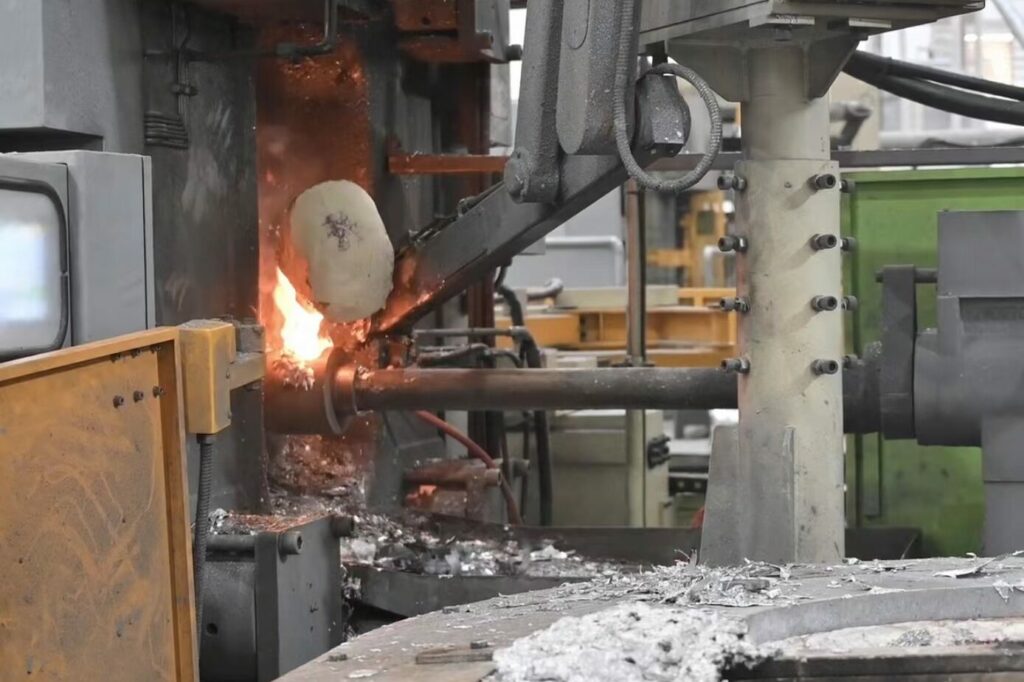
Fundição sob pressão é um processo de fundição de metal que envolve forçar o metal fundido a uma cavidade de molde sob alta pressão. Isso resulta em peças metálicas precisas e complexas que podem ser usadas em várias indústrias, incluindo automotivo, aeroespacial, e eletrônicos. A fundição de matriz oferece uma maneira econômica e eficiente de produzir peças de metal de alta qualidade com tolerâncias apertadas e excelentes acabamento superficial. Para saber mais, Veja o nosso Guia sobre elenco de Die.
Fundição sob pressão de câmara quente
O elenco de matriz de câmara quente é um processo de fabricação versátil que oferece inúmeras vantagens para produzir peças de metal de alta qualidade com eficiência. Mergulhando nos detalhes do elenco de morrer de câmara quente, Podemos explorar seus benefícios, limitações, e aplicações com mais detalhes.
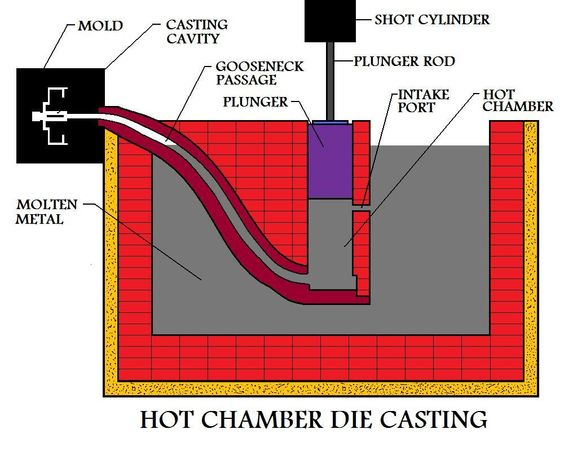
O que é o elenco de morrer de câmara quente?
CASTA DE DIA DE CAMANA HOT é um processo que envolve injeção de metal fundido, como zinco ou magnésio, em uma cavidade de molde sob alta pressão. O metal fundido é mantido em uma câmara aquecida, permitindo injeção rápida na cavidade do molde. A fundição de matriz de câmara quente é ideal para a produção de alto volume de peças pequenas e médias que requerem projetos complexos e detalhes finos.
Processo de fundição de morrer de câmara quente
O processo de fundição de morrer de câmara quente envolve 5 Principais etapas para produzir peças de metal de alta qualidade com eficiência. Aqui está uma breve visão geral do processo:
- Preparação de molde: O primeiro passo no elenco de morrer de câmara quente é preparar a cavidade do molde, que determina a forma e o design da parte final do metal.
- Injeção de metal fundido: O próximo passo envolve derreter o metal, normalmente uma liga de ponto de fusão baixa como zinco ou magnésio, em uma fornalha dentro da máquina de câmara quente. O metal fundido é então injetado na cavidade do molde sob alta pressão.
- Resfriamento e Solidificação: Uma vez que o metal fundido preenche a cavidade do molde, é deixado esfriar e solidificar, assumindo a forma do molde.
- Ejeção do elenco: Depois que o metal solidificou, O elenco é ejetado da cavidade do molde, revelando um componente metálico preciso e detalhado.
- Aparando e acabando: A etapa final envolve reduzir qualquer excesso de material do elenco e executar os processos de acabamento necessários, como polimento ou tratamento de superfície, Para alcançar a qualidade e a aparência desejadas da parte do metal.
Geral, O elenco de matriz de câmara quente é um processo rápido e eficiente para peças metálicas produtoras de massa com geometrias complexas e alta precisão.
Vantagens e desvantagens do elenco de morrer de câmara quente
Vantagens do elenco de morrer de câmara quente
- Tempos de ciclo mais rápidos: Hot Chamber Die Casting possui tempos rápidos de ciclo, Garantir processos de produção eficientes e reviravolta mais rápida para peças de metal.
- Menor consumo de energia: Este método consome menos energia, contribuindo para economia de custos e sustentabilidade ambiental durante operações de fabricação.
- Ideal para produção de alto volume: Hot Chamber Die Casting se destaca em lidar com grandes volumes de produção, tornando -o uma escolha preferida para as empresas que exigem saídas em massa de componentes de metal.
Desvantagens do elenco de morrer de câmara quente
- Limitado a ligas de ponto de fusão baixo: Uma desvantagem do elenco de Die Hot Chamber é sua limitação a baixas ligas de ponto de fusão, como zinco e magnésio. Essa restrição dificulta o uso de metais de alto ponto de fusão no processo de fabricação.
- Custos de manutenção mais altos: O equipamento de fundição de matriz de câmara quente leva a maiores custos de manutenção para os fabricantes devido à operação contínua e à necessidade de manutenção frequente para garantir o desempenho e a longevidade ideais.
Que tipos de metais são usados para fundição de câmara quente?
O elenco de matriz de câmara quente é comumente usado para baixas ligas de ponto de fusão, como zinco, magnésio, e chumbo. Esses metais oferecem excelente fluxo e condutividade térmica, tornando -os ideais para desenhos complexos e peças complexas. Os fabricantes costumam escolher zinco por sua alta precisão dimensional e bom acabamento superficial, tornando -a uma escolha popular para uma ampla gama de aplicações.
Fundição sob pressão em câmara fria
Casto de matriz de câmara fria é um método orientado a precisão que atende à produção de componentes de metal robustos. Neste capítulo, Vamos descobrir tudo o que você precisa saber sobre o elenco de morrer de câmara fria.
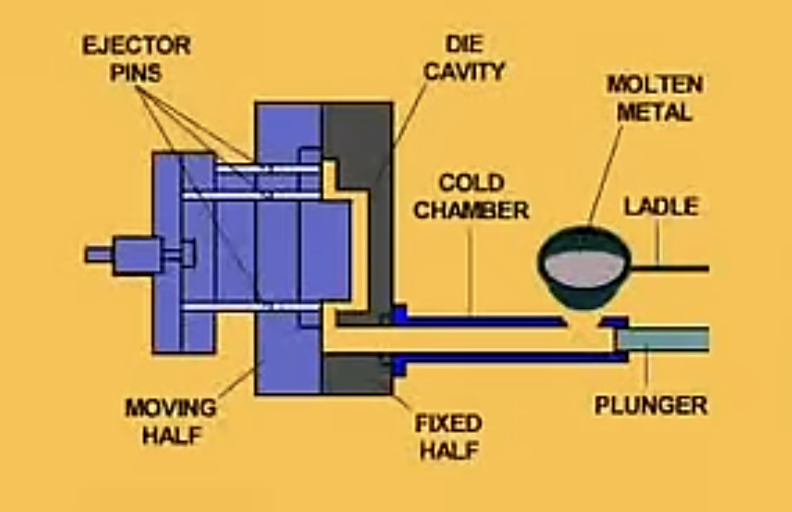
O que é o elenco de morrer de câmara fria?
Casto de matriz de câmara fria é um processo que envolve injeção de metal fundido, como alumínio ou cobre, em uma cavidade de molde sob alta pressão. Ao contrário do elenco de morrer de câmara quente, O metal fundido é mantido em um forno separado e depois transferido para a câmara de injeção, permitindo um melhor controle sobre o processo de fundição. A fundição de matriz de câmara fria é adequada para altas ligas de ponto de fusão que requerem peças precisas e duráveis.
Processo de fundição de matriz de câmara fria
O processo de fundição de matriz de câmara fria é um método meticuloso usado para fabricar componentes de metal de alta qualidade, particularmente aqueles que exigem altas ligas de ponto de fusão, como alumínio e cobre. Aqui está uma breve visão geral do processo de fundição do dado da câmara fria:
- Preparação de molde: O processo começa com a preparação de uma cavidade de molde que corresponde à forma desejada e aos detalhes da parte do metal a ser produzida.
- Derretimento de metal: Ao contrário do elenco de morrer de câmara quente, O processo da câmara fria envolve derreter o metal, normalmente alumínio ou cobre, em um forno separado externo à máquina de fundição.
- Injeção de metal fundido: Uma vez que o metal é derretido, está subido ou transferido para a câmara fria da máquina de fundição. O metal fundido é então injetado na cavidade do molde sob alta pressão para garantir um enchimento e solidificação precisos.
- Resfriamento e Solidificação: O metal fundido esfria e solidifica dentro da cavidade do molde, assumindo a forma e as características do molde para formar a parte final do metal.
- Ejeção e remoção: Depois que o metal solidificou, O elenco é ejetado da cavidade do molde, revelando o componente metálico detalhado e durável dentro.
- Apare e termine: Qualquer excesso de material ou imperfeições no elenco são cortados, e processos de acabamento adicionais, como demitir, polimento, ou revestimento, pode ser aplicado para alcançar a qualidade desejada e o acabamento superficial da parte do metal.
O processo de fundição de matriz de câmara fria permite a produção de componentes de metal robustos e precisos, tornando -o uma escolha preferida para aplicações que exigem peças metálicas fortes e duráveis feitas de ligas de ponto de fusão alta.
Vantagens e desvantagens do elenco de morrer de câmara fria
Vantagens do elenco de morrer de câmara fria
- Adequado para ligas de ponto de fusão alto: Matriz de câmara fria elenco acomoda altas ligas de ponto de fusão, como alumínio e cobre, Expandindo a versatilidade e a gama de opções de metal para fabricação de precisão.
- Melhor controle sobre o processo de elenco: Este método oferece controle superior durante o processo de fundição, permitindo que os fabricantes produzam componentes metálicos complexos e de alta qualidade com precisão e consistência.
- Mais a vida morre: A fundição de matriz de câmara fria geralmente resulta em uma vida mais longa em comparação com outros métodos, minimizar a necessidade de substituições frequentes de matriz e otimizar a eficiência da produção.
Desvantagens do elenco de morrer de câmara fria
- Tempos de ciclo mais lentos: Uma desvantagem de fundição de matriz de câmara fria é o seu ciclo mais lento em comparação com o elenco de matriz de câmara quente, Como o processo envolve a transferência de metal fundido de um forno separado antes da injeção para a cavidade do molde.
- Custos iniciais mais altos: O equipamento de fundição de matriz de câmara fria geralmente requer máquinas maiores e mais complexas, levando a custos de investimento inicial mais altos para os fabricantes. Apesar de seus benefícios, As despesas iniciais podem representar um desafio financeiro para algumas empresas.
Que tipos de metais são usados para fundição de câmara fria?
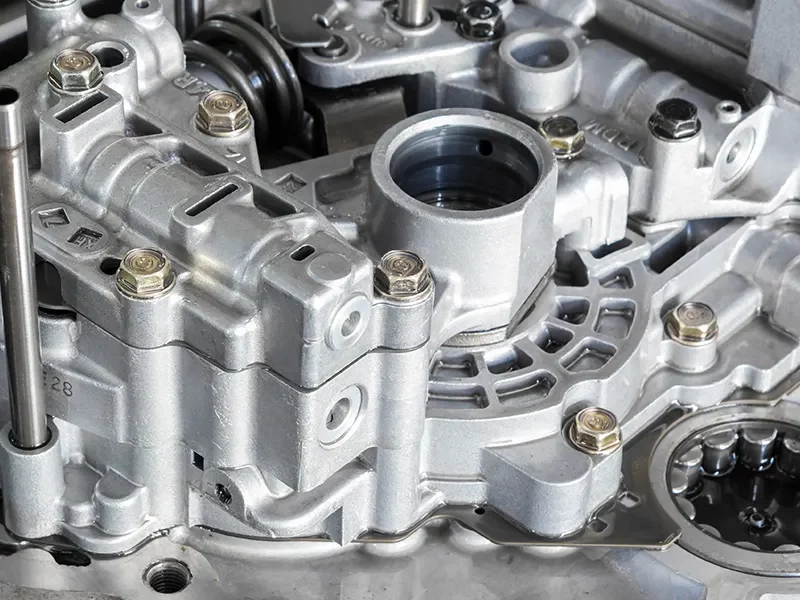
Casto de matriz de câmara fria é comumente usada para altas ligas de ponto de fusão, como alumínio, cobre, e latão. Esses metais oferecem excelente força, durabilidade, e condutividade térmica, tornando -os ideais para aplicações que requerem peças precisas e duráveis. Os fabricantes costumam escolher alumínio para suas propriedades leves e resistência à corrosão, tornando -o uma escolha popular para peças automotivas e componentes aeroespaciais.
Conclusão
Para concluir, Tanto a câmara quente quanto a transmissão da câmara fria oferecem vantagens e desvantagens únicas que atendem a diferentes necessidades de fabricação. O elenco de matriz de câmara quente é ideal para baixas ligas de ponto de fusão e produção de alto volume, Enquanto o moldagem da matriz de câmara fria é adequada para altas ligas de ponto de fusão e melhor controle sobre o processo de fundição. Em última análise, A escolha entre a câmara quente e a fundição da câmara fria depende de fatores como o tipo de liga de metal, volume de produção, e requisitos de qualidade.

